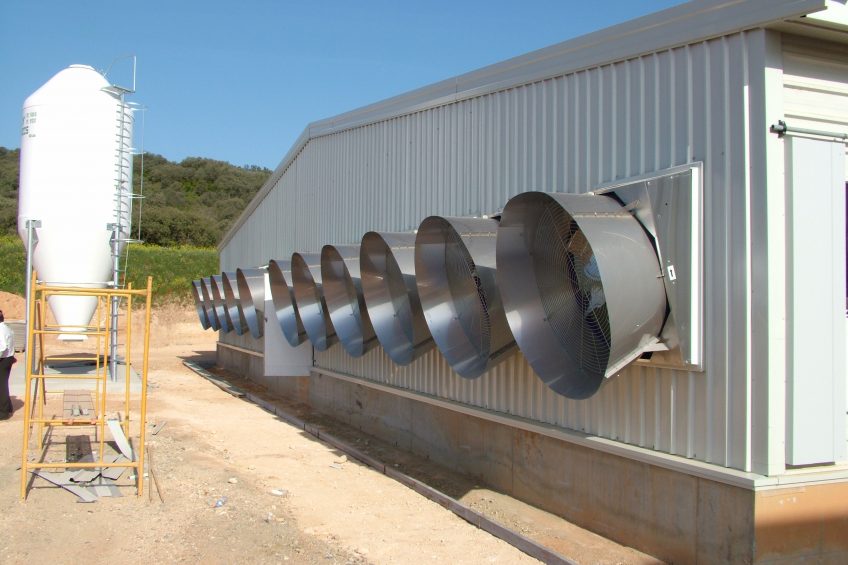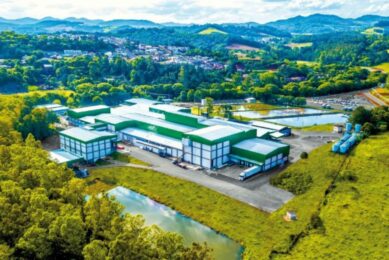What systems require most energy in pig barns?

American scientists have been investigating which applications inside swine barns require the most (fossil) energy to keep running.
In a recently completed project focused on electricity and fuel consumption in commercial swine facilities, researchers of the University of Minnesota, USA, identified the heating as well as the ventilation systems as top users.
Growing demand to sustainable swine production
The research was being carried out in the context of a growing demand to sustainable production – which requires a higher awareness. In an article on the university’s website, the researchers wrote: “Over the past several years, researchers from the West Central Research and Outreach Center (WCROC) have been working with pork producers to learn where fossil energy is used in pork production systems and to help them understand how to reduce their environmental footprint.”
3 phases in Midwest pork production
The researchers identified 3 phases in Midwest pork production. During each of these phases, pigs have very different environmental requirements, which in turn require differing fossil fuel inputs.
 Breed-to-wean phase
Breed-to-wean phase
This includes (sows and suckling pigs). In this phase, sows require extensive cooling during the summer, which is typically supplied by exhaust fans and hanging stir fans. The piglets in this phase require extensive heating especially during the first week of life which is supplied by propane heaters and heat lamps.
 Nursery phase
Nursery phase
This would include weaned pigs to about 23kg (50lbs) bodyweight. In this phase, pigs require both heating and cooling depending on their body weight and season of the year which are provided by propane heaters and fans, respectively.
 Finishing phase
Finishing phase
This would include finishing pigs from 23kg (50lbs) to market weight of about 127kg (280lbs). Pigs in the finishing phase typically require year-round cooling due to body heat generated by pigs in the barn.
Which swine farms were used?
To collect baseline energy data, 2 commercial facilities from west-central Minnesota representing typical upper Midwest swine production systems were selected for each phase of production:
- 2 breed-to-wean barns (BW-A and BW-B);
- 2 nursery barns (NB-A and NB-B); and
- 2 finishing barns (FB-A, tunnel-ventilated and FB-B, curtain-sided).
Electricity use was monitored by sensors installed on various loads throughout each barn (ex: ventilation fans, heat lamps, lights, etc.). Propane use was collected from propane invoices sent to the producers.
Calculation of electricity and propane use
Electricity and propane use were averaged between barns within each stage of production and divided by the number of pigs produced from each barn (see Table 1).
Electricity and propane usage were similar between breed-to-wean barns despite a difference of 29,000 pigs produced annually from the 2 different barns. Heat lamps used the highest proportion of total electricity in both breed-to-wean barns. Electricity and propane usage per pig was similar in both nursery barns despite an annual pig production difference of 50,000 pigs.
Ventilation: the largest proportion used in nursery
Ventilation accounted for the largest proportion of the total electricity used by each nursery. Total amounts of electricity used to produce one market pig ranged from 4.12 kWh (curtain-sided barn) to 14.40 kWh (tunnel-ventilated barn). Propane use ranged from 0.49 gallons/pig (curtain-sided barn) to 0.34 gallons/pig (tunnel-ventilated barn).
Despite barn design differences, ventilation was the largest user of electricity during the finishing phase. Based on this study, heat lamps in breed-to-wean barns and ventilation systems across all 3 phases of pork production were the most significant users of electricity.
Total use of fossil energy in commercial pig barns
The researchers wrote: “We calculated the total use of fossil energy in these commercial barns by comparing the total fossil fuels used from electricity and propane. The energy used for heating the barns (propane) accounted for 50% (breed-to-wean barns) to 90% (nursery barns) of the total fossil energy used in the barn. The next largest user of fossil energy was heat lamps in farrowing rooms then the ventilation system across all 3 phases of production.
“Our results suggest that pork producers need to focus on heating systems, ventilation systems, and equipment to keep piglets warm if they want to reduce the use of fossil fuels and improve the carbon footprint of their production system. In addition to improving the environmental impacts of their farms, improving the efficiency of these electrical loads and propane use should provide opportunities for increased profitability.”
The research was carried out by Kirsten Sharpe, Eric Buchanan, Mike Reese, Joel Tallaksen, Kevin Janni, and Lee Johnston, attached to the University of Minnesota, Morris, MN, United States.











